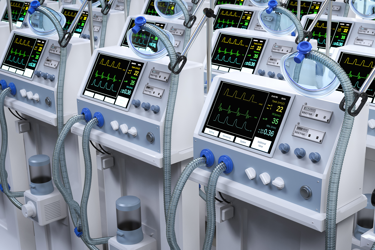How Advanced Sensors Improve Design & Functionality Of Respiratory Care Equipment
Erin Byrne, Chief Technology Officer at TE Connectivity

The COVID-19 pandemic marked a major acceleration in the demand for technologically advanced home respiratory care devices. As these devices mechanically supply respiratory breathing gas to patients suffering from an impaired respiratory function, either in a hospital setting or at home, they were absolutely essential during the pandemic.
Respiratory care equipment includes ventilators that pump breathable air into and out of the lungs, both invasive (through an artificial airway) and non-invasive (through a face mask). It also includes anesthesia machines, continuous positive airway pressure (CPAP) machines, and oxygen concentrators, which mechanically supply and control respiratory gases for medical applications.
The first somewhat modern respiratory care device was introduced almost 100 years ago. And while these devices have evolved significantly during that time, the greatest advancement in their design, functionality, and value can be attributed to the addition of a variety of advanced sensors. As manufacturers embed sensors in more and more respiratory care devices to help to improve performance, small size, ruggedness, accuracy, and reliability are increasingly important.
Get unlimited access to:
Enter your credentials below to log in. Not yet a member of RF Globalnet? Subscribe today.
